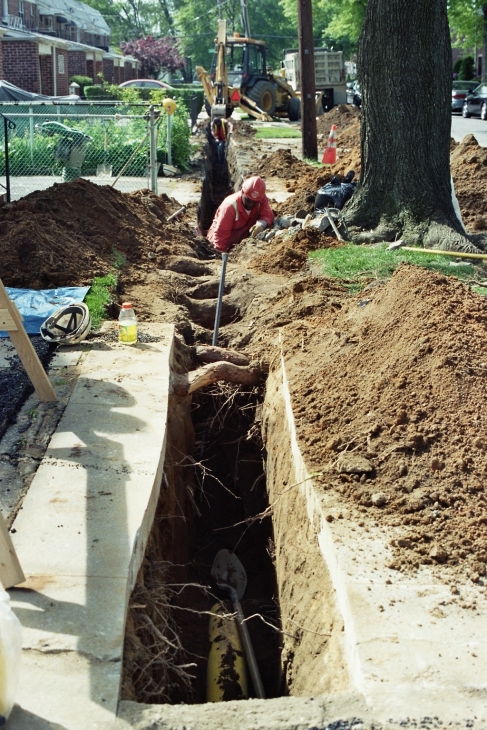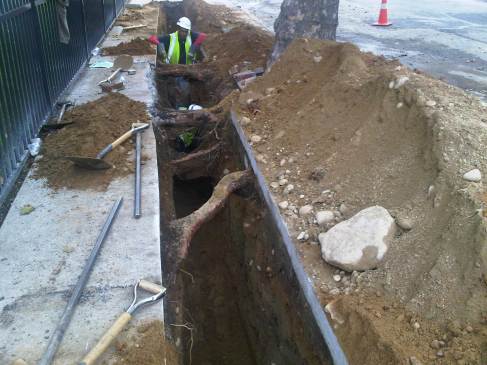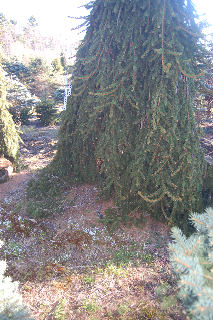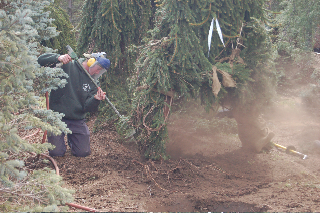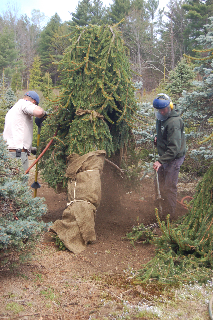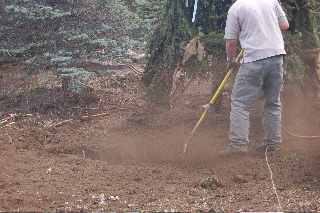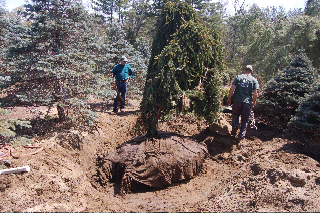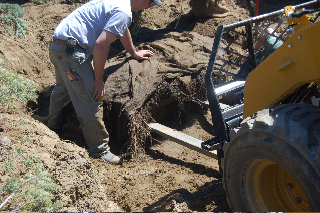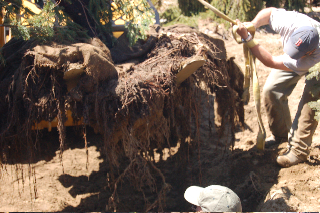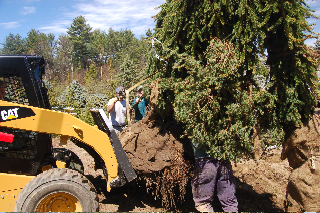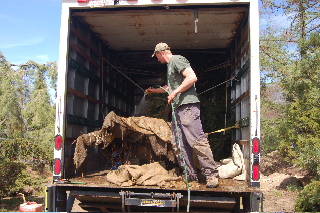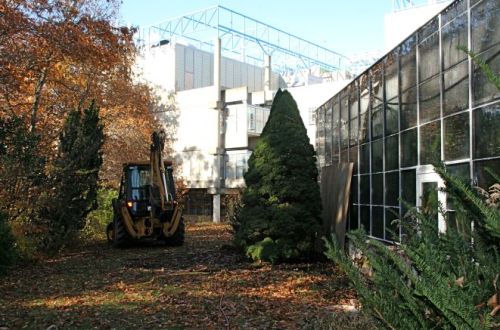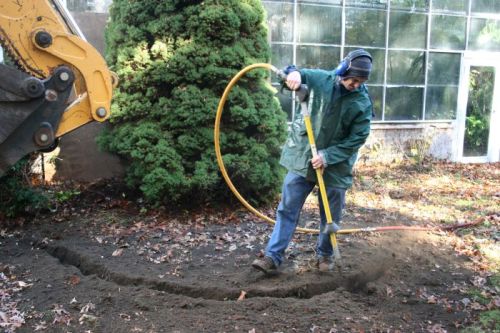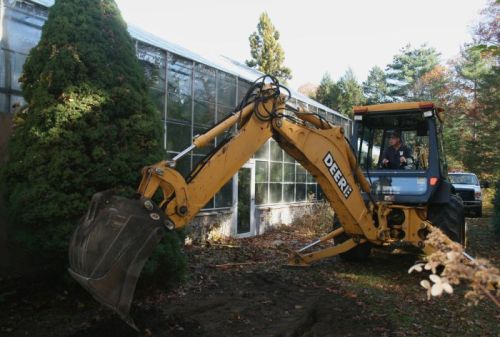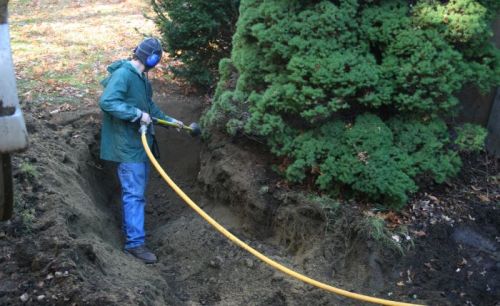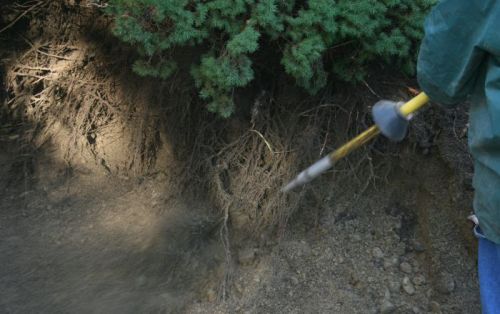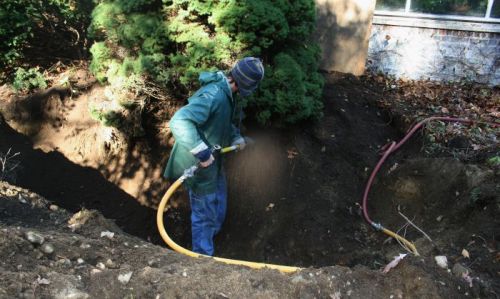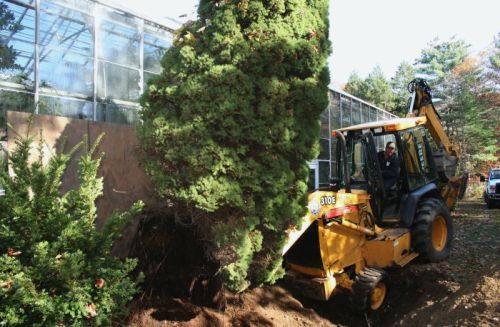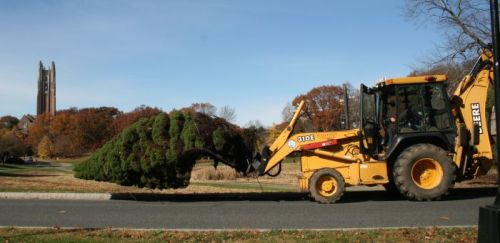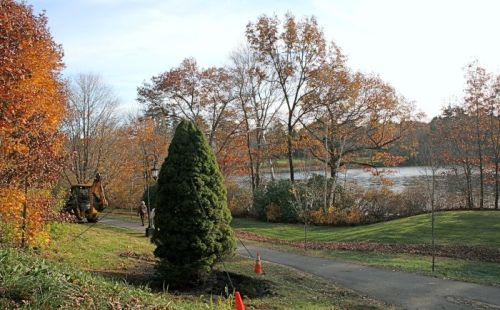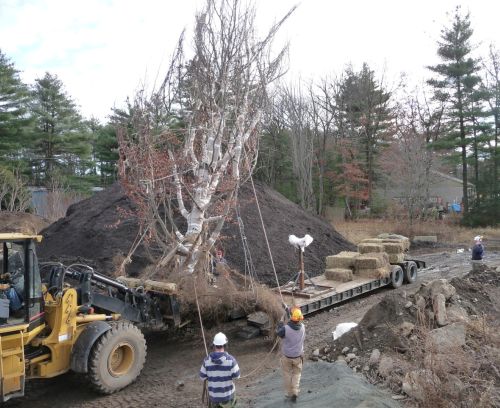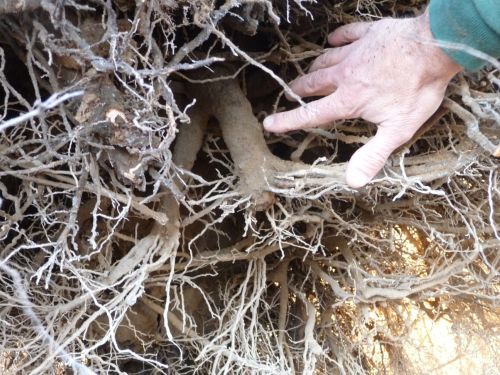For the last two years, Toby Wolf and I have been working for the Friends of the Public Garden in Boston, developing and implementing plans to renovate the Boylston Street Border, a 10.5′ wide planting strip along Boston Public Garden’s perimeter, between Arlington and Charles Street. It has been an exciting project to shepherd along: we have improved drainage (one puddled area was so bad we called it The Marsh), transplanted mature trees and shrubs to improve their growing situations, added bench pads and benches so visitors can enjoy the garden from among the plants, and we have added in a wonderful array of small trees, ornamental shrubs, a few perennials, and quite a few spring bulbs and ephemerals. Our idea has been to work with the existing rhythm of the border plantings, and to augment it in a way that increases screening from the street while it adds a pleasing show to walkers both inside and outside The Garden. With a Pilot Planting done last year and Phase Two just completed, we have finished the border’s western half, and it looks great:
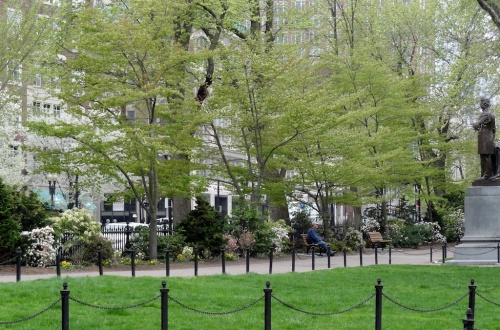
Boylston Street Border Pilot Area, Boston Public Garden, renovated in 2013 and blooming in Spring 2014. First we had all trees and shrubs pruned, and then we transplanted broadleaf and needled evergreens, added benches, improved drainage, and augmented existing plantings with more evergreen and deciduous shrubs, hosta and astilbe, and thousands of spring bulbs and ephemerals. Renovation will continue until the entire 840-foot long border has been rehabilitated.
As I say, the project has been funded and made possible by the Friends of the Public Garden, who are a delight to work with.
And now I have a new, quite personal project with the Friends, and it’s a doozie: I’m going to be running the 2015 Boston Marathon as part of Team Friends! For the next five months I’ll be training and raising funds for the Friends and their work in Boston Public Garden, Boston Common, and on the Commonwealth Avenue Mall. It’s going to be a great adventure; I have wanted to run a marathon — this marathon — since I was twelve, when I started running. I had to shelve that ambition when I had eye surgery at age 25. Twenty-nine years later (you do the math), this past June I began running again, and realized that my ambition hadn’t died. The Friends offered the opportunity, and I’m taking it. What could be better than to run, raise funds for a cause I truly believe in — the care and fostering of green urban parks in general, and the Public Garden and Boston Common in particular — and get to participate in one of international running’s most renowned events?
For the training period, I’ll be posting photos and notes on some of the parks’ holdings of trees and shrubs, as well as the stray hardscape feature as well. As is the way with any park or garden, life moves right along, and change happens from moment to moment, month to month; I’m looking forward to tracking some of that change in this blog.
If anyone reading this post would like to support my marathon efforts, the Friends and I would welcome any donations. The Friends have raised a high bar for my fundraising; I’m aiming to reach the $10,000 mark by January 1, 2015, so I can concentrate from then on in on training and the race itself. To read more about the marathon and Team Friends, and to make a donation, click on this link. All donations are fully tax-deductible (great for year-end accounting!); any corporate donation over $1,000 will get a company logo weblink on the Friends’ website (great advertising!), and unless you want to, you won’t be put on any solicitation/mailing lists. I will be so grateful, and so will the Friends.
(Even if you choose not to donate now, please watch this site; you should see some cool examples of well-tended trees in the next few months.)



